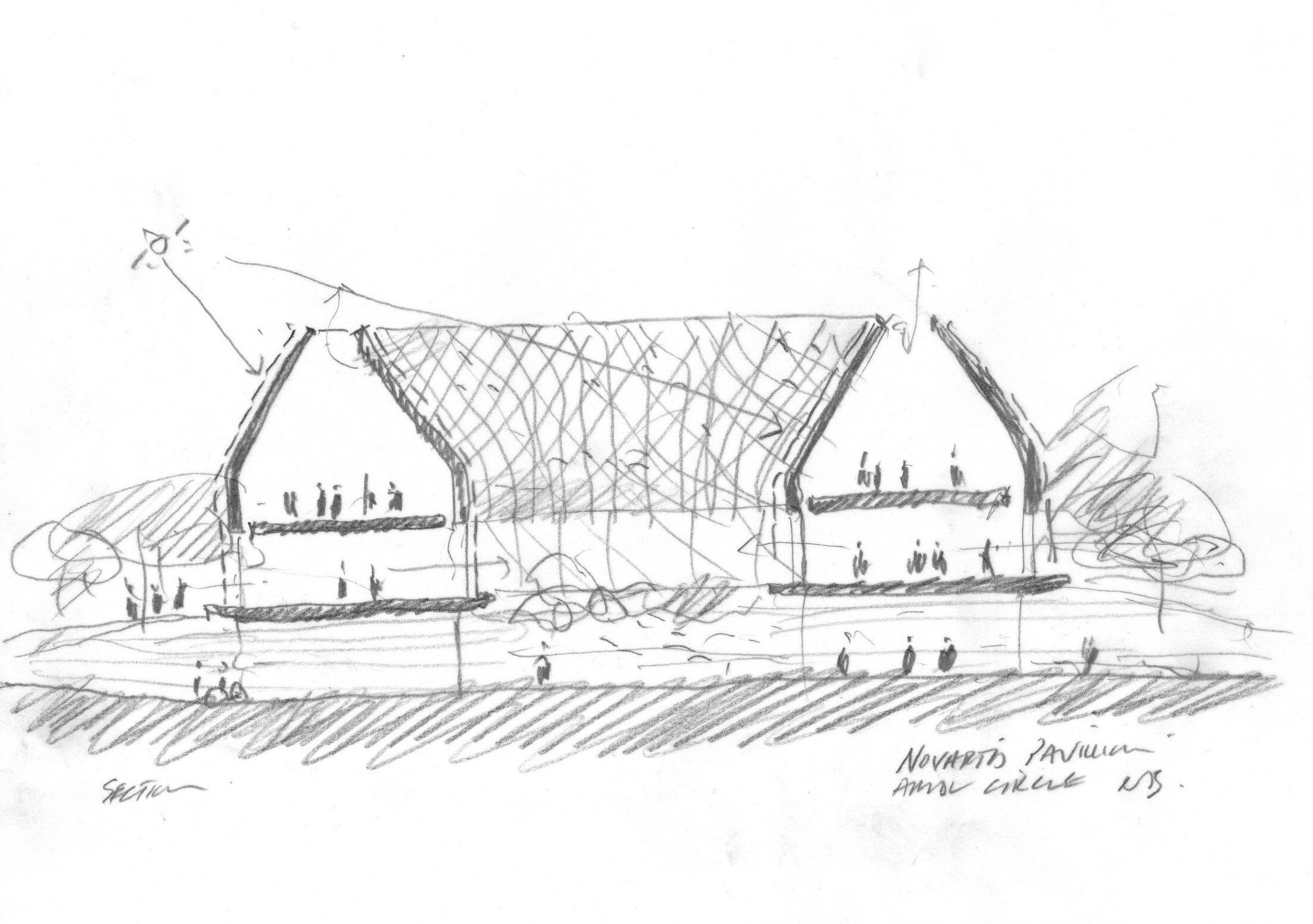October 16, 2023
Novartis Pavillon: Intertwine media within the architectural framework.
_project: Novartis Pavillon Zero-Energy Media Façade
_architecture: iart, AMDL CIRCLE & Michele De Lucchi
_location: Basel, Switzerland
In a rapidly evolving world, the fusion of architecture and media technology is forging new pathways in experiential design, transcending traditional boundaries to create spaces that are interactive, engaging, and reflective of contemporary themes. Among the vanguard of projects embodying this fusion is the Novartis Pavillon, steered by Valentin Spiess of iart. The guiding philosophy behind this project was to seamlessly intertwine media within the architectural framework, rather than treating it as a supplementary element. Centered around the motif of life sciences, the Pavillon draws inspiration from the concept of an organism, creating a media skin for the building composed of individual cells. This thematic underpinning is further echoed in the artistic displays on the facade, a collaborative endeavor between artists and Novartis scientists, encapsulating a narrative of ceaseless change and exploration.
The project transcends conventional architectural paradigms by envisaging a self-sustaining media facade, a concept that had earlier seen a simpler manifestation in the Swiss Pavilion at the 2010 Shanghai Expo. The Novartis Pavillon, however, elevates this concept to an unparalleled stature, integrating solar-powered autonomous cells to fuel the media facade, thus embodying sustainability and innovation.
The media architecture plays a pivotal role in enhancing user engagement and the spatial experience of the Pavillon. By day, the media facade announces the "Wonders of Medicine" exhibition housed within, transitioning at dusk into a radiant emblem visible across Basel. The digital artworks broadcasted onto the urban scape serve as conduits, communicating Novartis' thematic focus, kindling curiosity and fascination in passersby towards the realm of life sciences.
Sustainability, a paramount concern in modern design, is adeptly addressed in this project. The media facade doesn’t just consume electricity but generates it, portraying a novel synergy of communication ability and energy generation. The use of organic photovoltaics, as opposed to conventional silicon cells, marks a stride towards sustainability, as they necessitate lesser grey energy for production and function efficiently even in sub-optimal light conditions, making them apt for facade integration. Intelligent contrast control minimizes energy consumption by reducing brightness during nighttime, yet delivering a captivating visual display due to the contrasting darker surroundings.
Looking ahead, Valentin envisions media architecture as a potent tool in the arsenal of architects aiming to foster livable, sustainable urban spaces. The dynamic scope offered by media architecture, as showcased in the Novartis Pavillon, hints at a future where smart cities leverage such innovative designs to enhance urban life, simultaneously addressing sustainability concerns. Through projects like Novartis Pavillon, the evolving role of media architecture in shaping sustainable and smart cities is being unveiled, heralding a promising avenue for architects and designers across the globe.
credits
_article written by Daniela Moreira Silva
_film by iart
_film curatorship by Architecture Hunter
_cover image by iart – studio for media architectures
_drawings by AMDL Circle:





You’ve prove to be a great hunter. Now that you have reached the bottom, maybe it’s time to know us more.